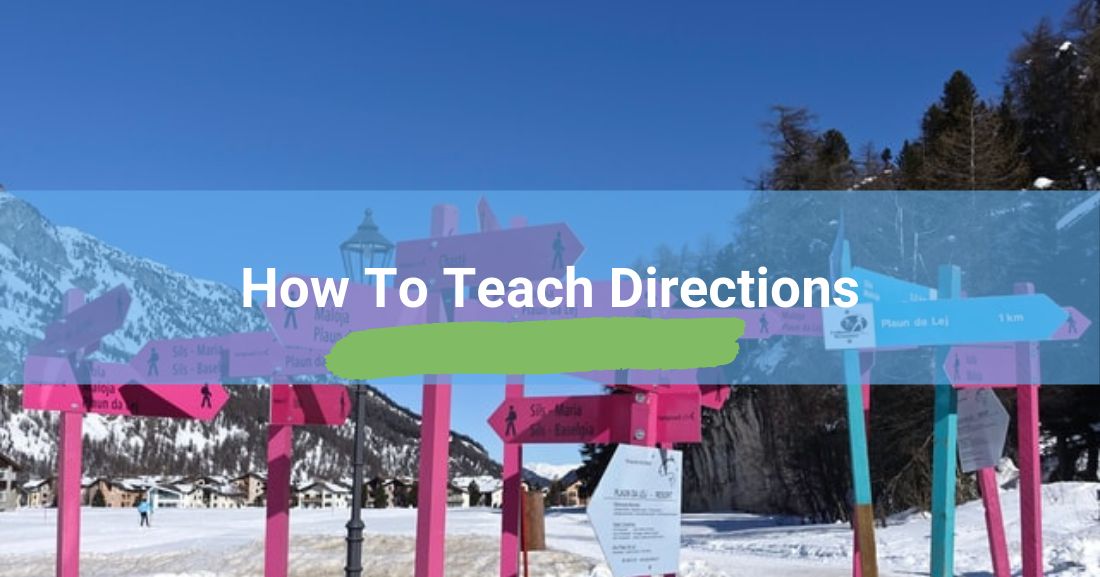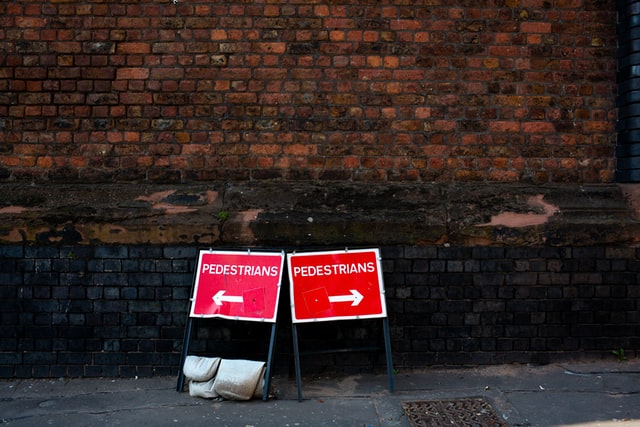

You might not think so, but giving and asking for directions is a basic language skill that is essential for your students.
Directions can be challenging to teach, however, its practical uses are readily understood by students and there are many fun activities you can incorporate into your lessons to make them more enjoyable. Typically the first directions lesson would follow lessons introducing vocabulary for landmarks, such as:
- Post office
- Police station
- School
- Bank
- Playground
- Park
- Library and so on
These will be used extensively in directions lessons.
How To Proceed
-
1
Warm Up - Directions
Maps represent the real world around us on a smaller scale and help students gain an understanding of directional concepts. Get your students interested in learning how to give directions. On the board draw a basic town map, including a few landmarks such as the park, the bookstore, the supermarket, etc.. Ask “Where is the school?” Have a student come to the board and point it out. Then ask where a few other landmarks are and have students draw and label them on your map. Draw a ‘you are here’ point for the students and draw a stick man as the starting point on the map from where they can base their directions. -
2
Introduce - Directions Vocabulary
Introduce the words ‘right’ and ‘left’. Try to elicit the meaning or translation of these words from the students and write them on the board with arrows demonstrating each direction. Once their meanings are made clear to the class, demonstrate proper pronunciation. Let them indicate the left and right directions with relevant hand movements. It may be fun to teach your students this little trick to remember right and left: if you hold your arms out in front of you, flex your wrists up and extend just your thumb and index fingers on both hands, the left hand with have a capital L for left. -

-
3
Practice
Ask students to do some choral repetition. Call on students to model pronunciation in order to check their progress on the individual level and do some quick comprehension tests. Ask a student to “Turn right” or “Turn left” with a demonstration and after a few individual checks feel free to have the whole class join in making sure they are listening to the words right and left and not just turning from side to side by occasionally instructing them to “Turn left, turn left” or “Turn right, turn right” which should end up with everyone facing the back of the classroom. Anyone who isn’t facing the correct direction needs to focus on the words more closely. -
4
Introduce - Directions Phrases
Introduce the following phrases:
-Turn right/left (at the 1st/2nd/3rd corner).
-Go straight past the supermarket.
-You’ll see it on the right/left.
-It’s across from (the school, the park, the post office)
-It’s next to (the police station, the playground, the library)
Explain the meaning of each phrase and lead some comprehension practice exercises. -
5
Practice
Mark your imaginary present location on a rough map or use the one from Step 1 and ask your students “How do I get to the ~?” Call on one student to give just the first section of directions, then another student for the second section, and then another until you’ve reached your destination. Repeat until your students feel comfortable enough with the new phrases to give a whole set of directions on their own. Next, mark a beginning position on the map and give a set of directions. Ask students “Where am I?” or “Where is the library?” to see if they were able to follow along with you and repeat. If necessary, go back to review anything that seems difficult for the students. -
6
Practice – Directions
After demonstrating the dialogue, ask the students to work in pairs to practice giving directions. Have students role play, each having a turn asking for directions and each giving the answers according to the map. The model dialogue should resemble this:
A: Excuse me. How do I get to the ~?
B: Turn left. Turn right at the 3rd corner. You’ll see it on your left.
A: Thank you!
B: You’re welcome.
Ask for volunteers to demonstrate their conversations to the class. Students can also use body language to help communicate and relay their directions. Overacting is always encouraged. Any difficulties during a demonstration can indicate which areas may need further review. See if classmates can correct errors if they occur. -

-
7
Production – Directions
For further practice, if appropriate for your students and school, create a maze of desks in your classroom and have students give directions to a blindfolded classmate. Having races is usually discouraged in this situation as it may lead to injuries. Generally having friends guide each other through the maze has the most successful results. As an alternative, direction themed board games or worksheets will also provide the necessary practice and would be more appropriate for larger classes. -
8
Mapwork – Directions
Let students create their own map on the board. One student will draw the map, while the other students will say where each location is situated on the map. For example, “the park is opposite the library.” “The entrance to the playground is on the corner.” -
9
Review – Directions
Ask for translations or demonstrations of all associated vocabulary and phrases as well as directions from one place to another. Encourage students to ask questions if something is unclear. Start the next few classes off with direction related warm up activities to help students retain all this new vocabulary.
When teaching directions, it is incredibly important to choose one structure and stick to it so that your students do not become unnecessarily confused. The examples above use the structure “Turn right/left at the 1st/2nd/3rd corner” but you may choose other phrases:
“Turn right/left onto Smith Street.” or
“Go three blocks and turn right/left.” or
“Take the 1st/2nd/3rd right/left after the school.”
“Turn right at the crossroads.”
“Continue past the traffic lights.”
“Take the second exit at the roundabout.”
“Go under the bridge.”
Happy teaching!
P.S. If you enjoyed this article, please help spread it by clicking one of those sharing buttons below. And if you are interested in more, you should follow our Facebook page where we share more about creative, non-boring ways to teach English.







